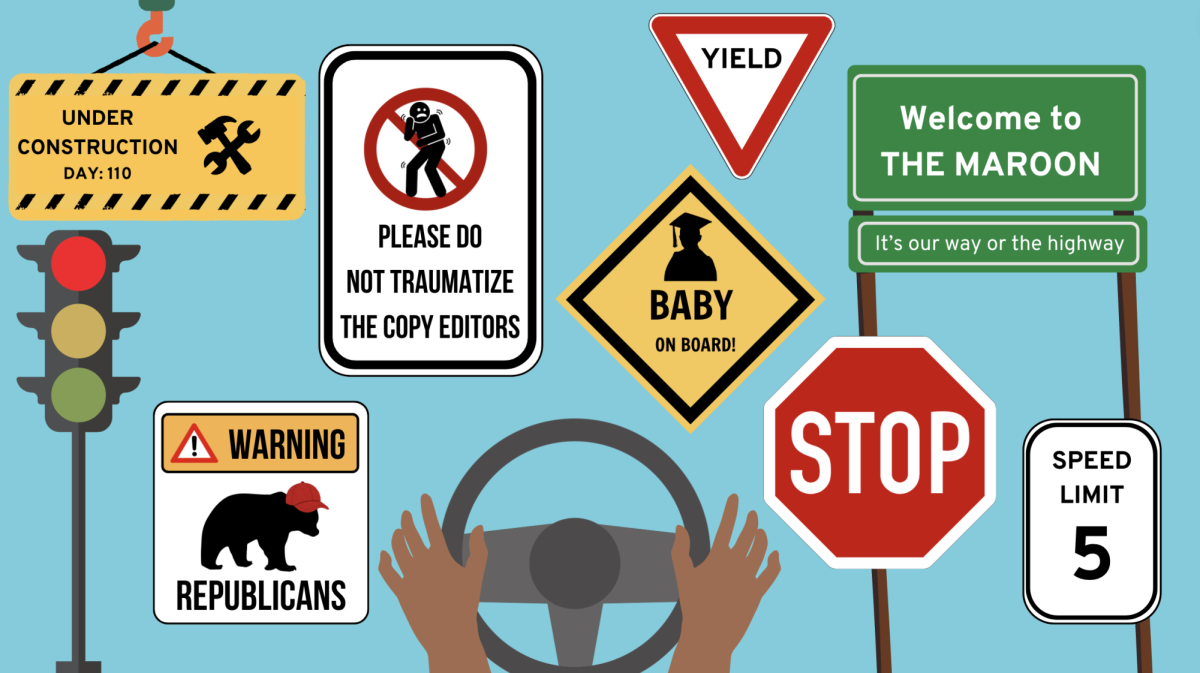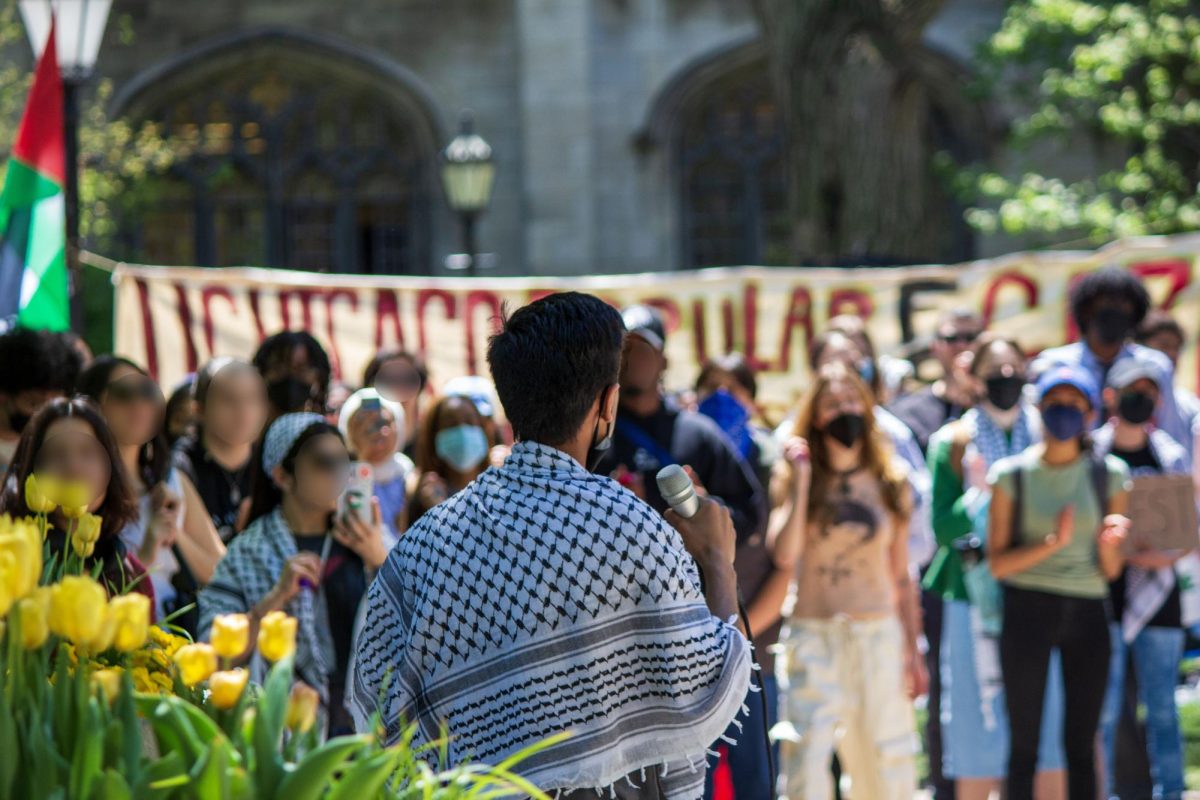Correction Appended
A few weeks ago, I found myself downtown in the early evening. Wanting to get home, I suggested to the people I was with that we take the Red Line back to Hyde Park since we were decently far from a #6 stop.
One of them looked at me and in all seriousness said, “And then what? Wait for the #55 bus and get killed?”
We took the #6.
This reaction to the prospect of standing on a public street anytime near sundown on the South Side is indicative of a pervasive perception, bordering on hysteria, amongst the student body here: that Hyde Park is not safe; that it’s a crime-infested slum where being distracted for just one second is to invite mugging, rape, and murder.
Here’s the truth: It’s not. Hyde Park is a relatively safe neighborhood, and the “criminals” that students see lurking in the shadows, waiting to attack them should they dare walk a few blocks after dark, are no more real than the monsters under their beds.
That is not to say, of course, that Hyde Park is crime-free. While it was historically much worse (think 40 years ago), in 2007 there were around 100 serious crimes committed in the Hyde Park area involving the University or University-affiliated residents according to the “Common Sense” pages the University provides to report crime statistics. Of these 100 crimes, almost all (around 90) were burglaries or robberies. Only 10 were violent in any way. And the robbery rate has been decreasing over the past several years.
Still, this may sound pretty bad. One hundred crimes, and all in the tiny Hyde Park/Kenwood area! Some context may help.
In 2000, Hyde Park’s population was around 30,000. In the intervening nine years (as next year’s census will confirm), the population has since grown. This does not include non-residents who are affiliated with the University, which, according to the Hyde Park/Kenwood Community Conference, brings the number above 40,000. That means that there is slightly less than one serious crime victim per every 400 people. That isn’t so bad compared to, say, Detroit, where the rate is about 36 victims per 400 people for the same crimes, or even somewhere as seemingly innocuous as Myrtle Beach, SC, where burglary alone affects 20 out of every 400 citizens.
It is also important to remember that almost none of the crimes that do occur in Hyde Park are committed against students. Of the eight security alerts received this year—including the terror-inspiring drive-by shootings of the last several weeks—almost none have involved students, who go more or less unharassed by criminals, except for the occasional mugging, which, while serious, is the case in any urban area—not just Hyde Park.
So despite the fact that not much actually happens in the way of a massive criminal war against the student body, University students—especially those in the College—remain convinced that they’re going to school in one of the scariest places in America. They take SafeRide for five-block walks, and refuse to go outside after dark without a large group. Certainly some of this is prudent caution, but the attitude surrounding it—believing those who would do otherwise are crazy, exhorting to friends at other schools how we live in a “ghetto”—borders on insanity. Since it is an attitude unjustified by the facts, where did it come from?
It would be easy to make an argument for race or class bias: After all, many of Hyde Park’s residents are poor and black, while most University students are white and (by most standards) pretty well off. However, many people would react poorly to such a point, valid though it may be. They would think that it is unfair to blame their seemingly rational concern on unrealized bias, and maintain that they are themselves neither racists nor classists and that fear of big, poor black men is not the same as fear of Hyde Park. For that reason, I think a more tangible reason might be explored.
When it comes down to it, the culture of hysteria around Hyde Park is one driven largely by the school. It comes in small things—the Security Alerts that, though a reasonable measure, jump all-caps into students’ inboxes every few weeks as if to remind them that their safety is merely temporary. Fear comes in the form of signs strongly encouraging students to take SafeRide two blocks across the Midway after dark, and in the form of school-insignia-bearing “rape whistles” handed out during O-Week with the implicit suggestion “you are going to need these.”
Fear comes as well from students who, it seems, want on some level to believe that this is a dangerous place. When told by the school that the University of Chicago Police Department is one of the largest private security forces on Earth, they hear “it must be a dangerous place,” not “you are well protected.”
It’s doubtful that anything can be done about this. It would be unreasonable to ask the school to stop providing resources or information about the dangers that do exist, though perhaps it would be beneficial to do it hand-in-hand with explanations that, in fact, you probably won’t need your rape whistle. It would be unfair to ask students to wander carefree around the Midway at two in the morning or to give up SafeRide, but it would help for them to know what is actually unsafe and what is just the shadows talking. It might even reduce the Friday night wait for the van.
A single specific behavior cannot on its own end the culture of hysteria. But it is worth exploring where that hysteria comes from and wondering if we can’t, perhaps, consider that it might be time to understand that death is not around every corner, and that—believe it or not—the big, scary Hyde Park community is not out to get us.
Emmett Rensin is a first-year in the College.
In the original version of this column, Myrtle Beach was incorrectly described as being located in North Carolina. It is in South Carolina.







